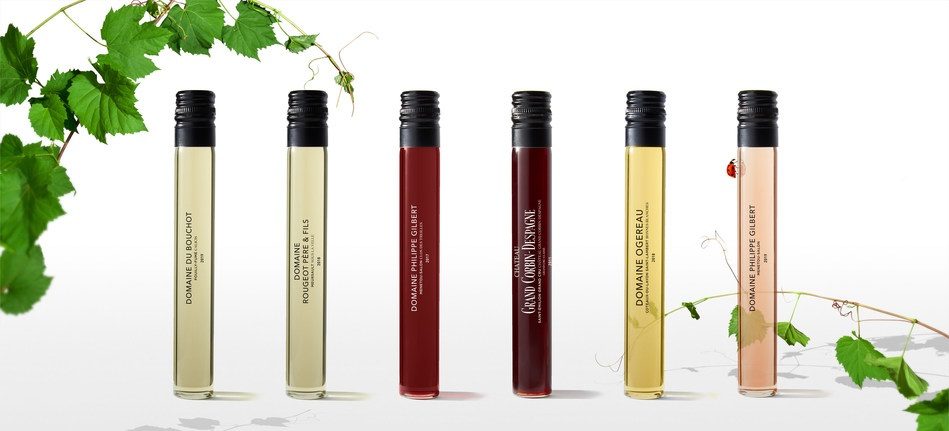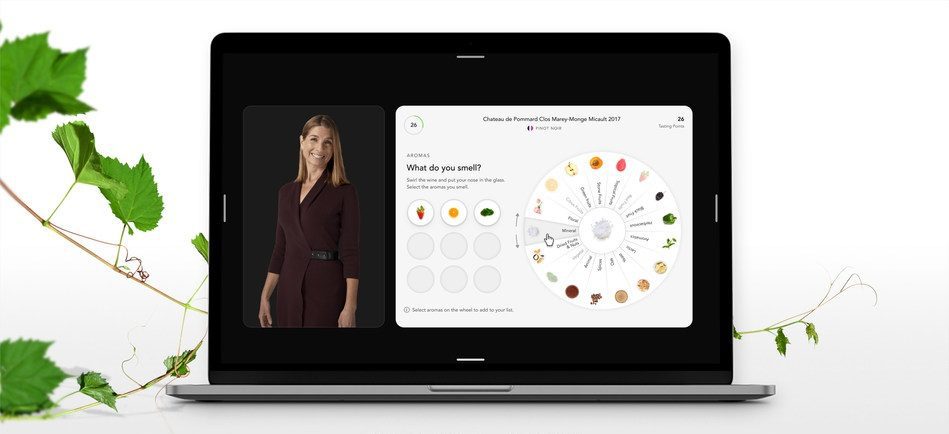
Online wine tasting just went hi-tech
Peter Ranscombe logs on to tech entrepreneur Michael Baum’s Vivant virtual wine tasting platform – and he’s impressed by what he sees.
I GUESS is was just a matter of time before online wine tastings got the gamification treatment.
When every other aspect of our lives – from logging the miles we slog on running apps through to earning rewards for making online purchases – has been turned into a game with points and prizes then why not wine tasting too?
And, if you had to put money on who was going to lead the charge into combining technology and wine, then Michael Baum would be at the top of that list.
Baum is a serial Silicon Valley tech entrepreneur and is best known as the founder of software firm Splunk.
In 2014, he and his wife, Julie Carabello, bought the Château de Pommard winery and vineyards in Burgundy.
As well as enhancing the domaine’s organic credentials, Baum has already developed an online version of La Route des Grands Crus, a driving route through the Bourgogne.
With a pedigree like that, he seems like a good contender to get an interactive online wine tasting platform right.

Expanding horizons
Step forward Vivant; the platform offers five different styles of experiences, ranging from “essentials” – which introduces participants to the basics, like grape varieties and wine-producing regions – through to interactive sessions that focus on specific regions, producers, tastings methods, and food pairings.
It began with Bordeaux, Burgundy, and the Loire, and has already added Alsace and Champagne to its roster, with Germany, Italy, and Spain coming soon.
Participants can order wines so that they can taste along at home, with their samples delivered in giant test tubes with screwcaps, which are fast becoming my preferred option for trade wine tastings too.
It’s a whole world away from a Zoom tasting.
Logging into one of the preview sessions, I was expecting the same clunky video conference software with which we’ve all sadly become familiar during the pandemic.
Instead, Vivant combines high-quality live streaming with television-standard videos.
Each session is hosted by a presenter who guides participants through the wine tasting and provides links between videos that show each producer in their vineyard.

High quality
Forget about crackly Facetime or WhatsApp calls – these are top-notch videos in the ilk of Top Gear or A Perfect Planet.
They’re glossy – bordering on cheesy – complete with sweeping orchestral music and slow-motion panning shots.
The presenters are of an equally high quality; the session I joined was led by Kateryna Dobbert, a wine expert from Ukraine, who’s now based in Berlin.
The host explains to guests how to taste the wines – taking in their appearance, aromas, and flavours – and answers questions from the audience.
This is where the gamification comes into play; participants can type questions, with fellow guests awarding points for the quality of the questions.
Participants also get points for how many aromas and flavours they can spot by selecting options on-screen as they taste the wines.
At the end of the session, the guest with the most points is the winner; each participant is signed-up as a member of Vivant, and so their scores are recorded from each session they attend.
Fast paced
It’s fast-paced – this is American game show speed rather than plodding British documentary.
That could become an issue if you’re less technically literate; it’s live, so there’s no “pause” button.
Yet that’s perhaps less of a concern because the audiences for these tastings will be the tech-savvy, content-devouring generations who enjoy the pace of flitting between Instagram and TikTok.
What will unite all generations though is the quality of the wine.
All the producers featured on the platform are organic or biodynamic.
Making wine without pesticides and other synthetic chemicals is a key part of Baum’s attitude at Château de Pommard, and it’s great to see him extend that philosophy on Vivant.
And, if the wines I tasted as part of the Loire session are anything to go by, participants won’t be disappointed in the quality of the wine being poured from their test tubes.
Tasting notes
Domaine Vincent Pinard Nuance 2018 (£24, Vivant)
Reguarly readers will know that I rarely reach for sauvignon blanc of my own volition, but these six wines demonstrate the range of styles available from the Loire. This juicy Sancerre sings with lemon, along with a squeeze of peach and a touch of cream to balance its high acidity.
Domaine du Bouchot Petram 2018 (£17)
Less balance than the Nuance between the high acidity acidity and the lemon rind and apricot flavours, but the fruit is still juicy and tangy, and would be brought into harmony with a fish dish or a goats’ cheese salad. Bouchet was the first producer in Pouilly-Fumé to earn organic certification.
Domaine Philippe Gilbert Clos des Treilles Blanc 2017 (£25)
Aromas of red apple skins and peach on the nose lead into butter and cream joining the fresher fruit flavours on the palate. Tastes almost like chenin blanc than sauvignon blanc with its concentrated biodynamic fruit flavours and richer mouthfeel.
Domaine Vincent Pinard Chêne Marchand 2018 (£37)
A great example of just how complex sauvignon blanc can become. Ranging from lemon through red apple and pear and on to cream and butter on the nose, with honeyed notes joining the party on the palate to help balance the fresh acidity.
Domaine du Bouchot Calicis 2019 (£22)
A perfect Pouilly-Fumé example of why it’s worth paying a few extra pounds to enjoy an organic wine. Complex lemon, lemon curd, and passion fruit on the nose give way to more apricot and lemon the palate, with that classic organic intensity to its flavours in the glass and a superb balance between the fruit and the acidity.
Domaine Philippe Gilbert Les Chandelières Blanc 2015 (£25)
For me, we saved the best till last in the tasting. Older sauvignon blanc is a rare treat, with the inexhaustible march of freshness-filled vintage after vintage making us sometimes forget just how elegant this grape can become. Here, the classic green pepper, asparagus and lemon rind aromas are joined by pear drops and a whiff of the farmyard. On the palate, there’s still biodynamic freshness to the acidity, which is balanced by savoury grapefruit, lemon rind, and lemon flavours.
Read more of Peter’s wine, beer, and spirits reviews on his drinks blog, The Grape & The Grain.
TAGS

